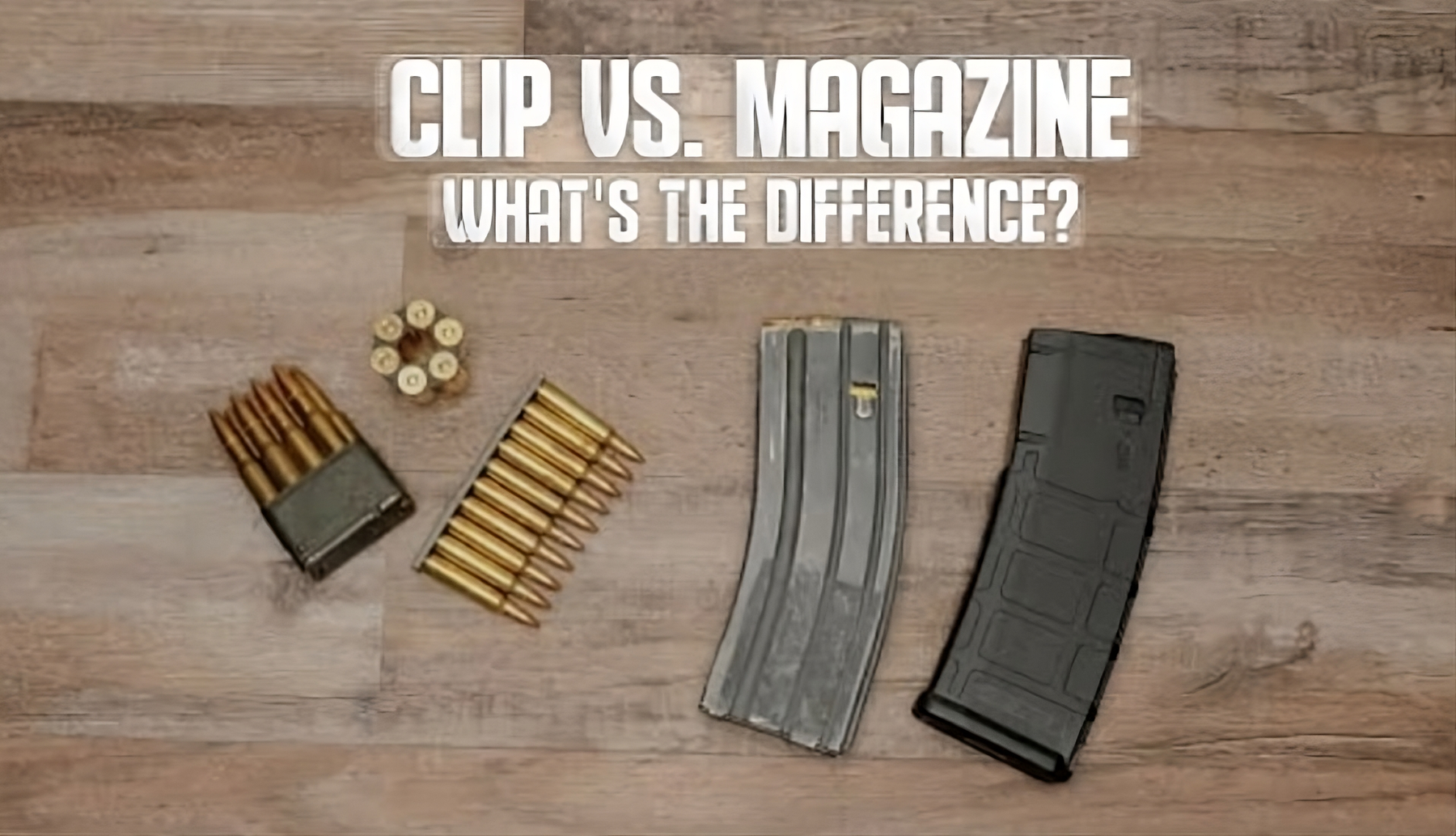
Clip vs. Magazine: What’s the Difference?
A debate often comes up among firearm enthusiasts, hunters, and new gun owners: clip or magazine? While the terms are sometimes used interchangeably, they’re not the same thing. Mixing them up may seem harmless, but getting it right matters — especially if you're aiming to sharpen your firearm knowledge or communicate effectively in conversations about guns.
In this article, we’ll break down the correct terminology, key differences between clips and magazines, define their roles in firearms, and clear up some of the common misconceptions that cause all this confusion in the first place.

Defining a Clip
What is a Clip?
A clip is a simple device designed to hold multiple rounds of ammunition together for easier loading into a firearm or magazine. Rather than feeding ammunition directly into the firearm, a clip acts as a helper, making it faster to load ammunition into an internal or detachable magazine.
Think of a clip as an organizational tool — essentially a shortcut for loading ammunition in bulk rather than one cartridge at a time. It’s an older technology that still plays an important role in certain firearm designs.
Types of Clips
Clips come in a couple of different forms, each suited to specific types of firearms:
- Stripper Clips: These hold a row of cartridges, which can then be quickly inserted into a magazine or internal rifle chamber. Stripper clips are most commonly used with bolt-action rifles and are simple yet effective.
- En Bloc Clips: Unlike stripper clips, en bloc clips are loaded into the firearm along with the ammunition. Once the last round is fired, the empty clip is ejected. The iconic M1 Garand rifle uses this type of clip.
Historical Context
Clips were far more common in the early 20th century, especially in military rifles. For instance, en bloc clips were crucial in the operation of rifles like the M1 Garand, while stripper clips helped soldiers load internal box magazines in bolt-action rifles such as older Remington and Marlin models.
Defining a Magazine
What is a Magazine?
A magazine is the component of a firearm that stores and feeds ammunition directly into the chamber. Unlike a clip, which merely holds ammo together, a magazine has moving parts like springs and followers to ensure smooth feeding into the firearm.
Magazines come in a variety of designs, tailored to fit specific firearm types. Whether built into the gun (fixed magazines) or detachable, their role is critical in ensuring the firearm can fire multiple rounds without constant reloading.

Types of Magazines
Here are the most common types of magazines found in modern firearms:
- Detachable Box Magazines: These are the most widely used today, allowing quick swapping of empty magazines for full ones. Found in many modern rifles and handguns, detachable box magazines are highly practical. Popular brands like Remington and Marlin often pair their rifles with detachable box magazines.
- Drum Magazines: Shaped like a drum, these high-capacity magazines hold large amounts of ammunition, typically used for tactical or sport shooting purposes.
- Internal Magazines: Fixed magazines, often seen in bolt-action rifles and some older shotgun models, are built into the firearm itself and require manual loading, sometimes with the aid of a stripper clip.
Modern Relevance
Magazines have largely replaced clips in most modern firearms, as they are more efficient for loading and feeding ammunition. Detachable magazines, in particular, are a staple of modern firearm design, making reloading quick and seamless compared to older systems that relied on clips.
Comparing Clips and Magazines
Functional Differences
The key functional difference between a clip and a magazine lies in their purpose. A clip is used to load ammunition into a magazine or internal chamber, while a magazine feeds ammunition directly into the firearm for firing.
In simple terms:
- Clip = loads ammo into a magazine.
- Magazine = loads ammo into the firearm.
Physical Differences
Clips are typically smaller, lighter, and simpler in design — no moving parts, just a strip or frame to hold the cartridges. Magazines, on the other hand, are larger, sturdier, and include mechanisms like springs to facilitate ammunition feeding.
Usage Differences
- Use a clip with firearms that have internal box magazines (like older Remington or Marlin rifles) or those specifically designed for clip-assisted loading.
- Use a magazine with modern firearms that require detachable or internal magazines for ammunition storage and feeding.

Common Misconceptions
Despite their clear differences, clips and magazines are frequently mixed up. Here are a few myths that trip people up:
- “A clip and a magazine are the same thing.” Not true. While they’re both involved in handling ammunition, they serve entirely different purposes.
- “Modern firearms still rely on clips.” Mostly false. Clips are largely obsolete for modern firearms, although they remain relevant for older rifle designs and enthusiasts who prefer them.
Why It Matters to Use the Correct Term
Using accurate terminology isn’t just about sounding knowledgeable — it’s also about clear communication. In safety training or at the shooting range, knowing the right terms ensures everyone understands what you mean, which can prevent confusion or even accidents.
Plus, understanding the difference between a clip and a magazine deepens your appreciation for firearm mechanics and history, giving you greater confidence in your skills and conversations.

The Bottom Line on Clips and Magazines
At its core, the difference between a clip and a magazine boils down to function: clips help load ammunition into a magazine, while magazines feed ammunition into the firearm. Each serves a unique purpose, and knowing when and how to use the terms correctly is essential for any firearm enthusiast.
If you're looking to upgrade or replace your firearm magazines, check out our full collection of rifle magazines or explore our sections for Marlin magazines and Remington magazines.
Knowing these differences sharpens your understanding and helps you join the conversation with precision and authority.
